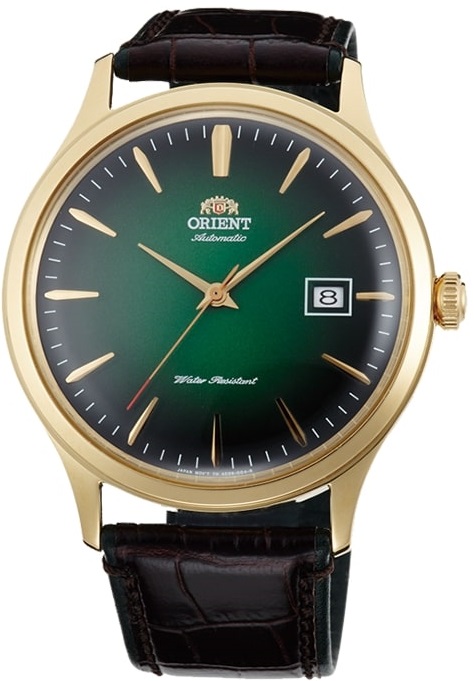When you start your first watch collection, the amount of information to learn can seem overwhelming. There are tons of different watches, with different movements and functions. It can get really confusing. This article will help you distinguish between automatic and mechanical watches.
The 3 types of movement

To begin, we need to look at the 3 different kind of watch movements out there. The first one, and the most common, is the quartz movement. This is the go-to caliber for cheap watches. It is inexpensive to make, and it is the most accurate movement of the three. Watch collectors might look down upon watches with this movement because it is considered too modern, and lacks the heart of a classic timepiece.
The two remaining types of movements are the automatic and the mechanical watches. These have been used for hundreds of year, and are very much alike, with a few key differences. I will talk about the mechanical movement first, then compare it to the automatic movement
Mechanical Movement
The mechanical movement is the one that started everything. This kind of caliber has been used since the first clock built in the 16th century, to today, where it is now mostly reserved for higher quality watches.
What is a mechanical movement?
A mechanical movement is a movement driven by a main spring, that needs to be hand-wound manually. This is why this type of caliber is often called ''hand-wound mechanism''. Contrary to the quartz movement, the mechanical caliber doesn't need any battery to function.
How does it work?
As mentioned above, to start a mechanical watch, you will need to wind the main spring manually. This can be done by rotating the crown that is often situated on the left or right side of your watch.

On the left picture above, you can see the main spring, located in the barrel. On the right picture you can see the full mechanical movement. You will rotate the crown (the part that sticks out the caliber) to give energy to the movement.
When you rotate the crown, the main spring will wind itself. It will then be released slowly with the help of different pieces and gears such as a wheel train, an escape wheel and a balance wheel.
The Orient Bambino is one of the few affordable hand-wound watches
Mechanical watches will usually have a power reserve of about 40-50 hours. This means the movement will continue to keep time for this period of time, but you will need to hand wind it again to get it going after that.
This may be inconvenient for people who buy a watch for everyday use. However, some higher-end pieces like the Tissot Powermatic, will have extended power reserves (80h+).
Automatic movement
Technically, the automatic movement is a sub-category of the mechanical watch. It has become so popular that people will usually separate these movements in different categories. To be grammatically correct, the movement I talked about above should be referred to as a manual movement.
What is an automatic movement?
Just like the manual movement, the automatic movement uses a main spring to power the clock. Instead of winding it by hand, this movement winds itself using the natural motion of your body. This means you will never have to wind an automatic watch if you wear it everyday.
How does it work?
Instead of using a crown to manually wind the main spring, the automatic movement uses an oscillating weight. This weight (pointed by the yellow arrow on the picture below) turns on a pivot (pointed by the metal tool).

source: oscarmikewatchco.com
This pivot is attached to a ratchet wheel (see picture below), which will wind the main spring. Again, the main spring will use a series of reverser and/or reducing gears, which will control the unwinding to match the time passing.

source: jewelerssupplies.com
There are different layouts for self-winding mechanisms. For example, some will use the energy from the weight swinging one way, while other (more refined) movements will use the energy from the weight swinging both ways.
As you can see on the picture below, there is no crown connected to the main spring on a strictly automatic movement.

source: ablogtowatch.com
To get the watch going for the first time, you will need to shake it from side to side for 30-60 seconds. After that, the movement of your wrist will be enough to keep it going. Like manual watches, automatics usually have about 40-50 hours of power reserve before needing to be wound again. As I said earlier, you shouldn't need to wind an automatic watch if you wear it everyday.
It is important to note some watches offer an automatic winding mechanism, with the option to hand wind it if the power goes out. A great example is the Orient Mako II.
The Recap
The biggest difference between an automatic and a mechanical (manual) movement is the following:
Mechanical movements require manual winding, while automatic movements wind themselves using your body's motions.
Which one should you choose?
Automatic
If you plan on owning a single watch and wearing it everyday, the automatic movement is the one for you. You will never need to wind it manually, as you will move around all day. This will also free you from the unappealing visual of an extra crown on the case.
You should not buy an automatic movement if you have a sedentary job that involves sitting in front of a computer all day. As the automatic caliber gets worn out, it will lose a bit of its efficiency. Some users report that their automatic movement stops working, even if they wear it all day. This problem is more common in cheaper watches.
Manual
As is the case for automatic movement, mechanical movements are for watch collectors, as they will be less convenient and less precise than a quartz movement. The mechanical (manual) caliber is suited for watches that you plan on wearing on occasions.
If you wear it from time to time, you will be able to hand-wind it every time. This is still an inconvenience, but it is much easier and fun to rotate a crown rather than shake a watch for minutes.
In general, mechanical movements require a bit more maintenance than automatic, since winding the mainspring by using a crown causes more wear and tear than winding it by a pivot.
Automatic
Pros
Cons
Manual
Pros
Cons
I could write about these types of movements for hundreds of pages, so I did my best to synthesize the subject. Let me know in the comments if there are some points you would like to know more about.






Great information!!!
This is a very interesting and informative article. You helped me understand this topic 10x more than others out there so thank you. I plan on collecting watches so i think mechanical is for me as i like tradition and legacy, my only problem is as you said in the article they arent for everyday use which is what i plan to do but i can compromise haha. Thanks again